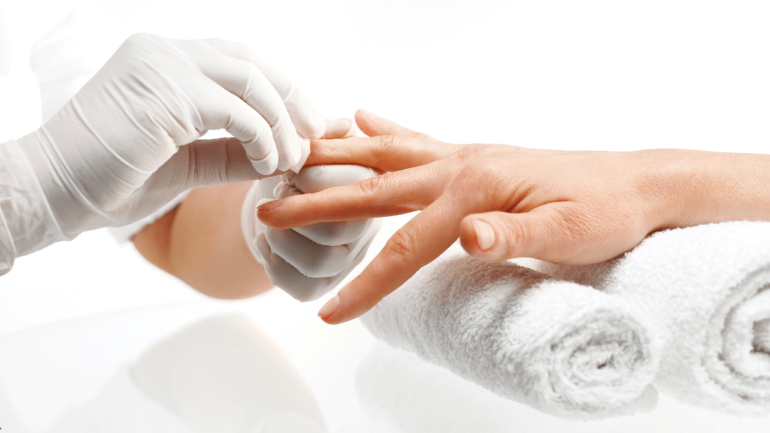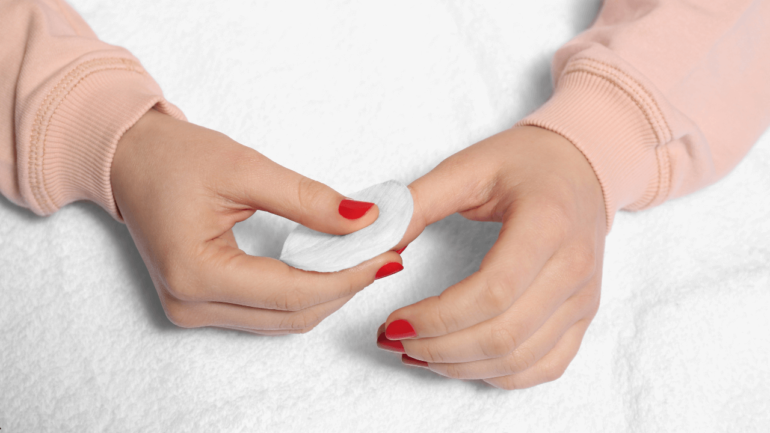How to Remove Nail Polish Without Damaging Your Nails

For Distributors & Wholesalers
We welcome partnerships with distributors and wholesalers who wish to expand their business with a trusted and growing cosmetic brand.
Why Partner with Avlon International?
- Wide range of cosmetics: Nail polish, mascara, kajal, eyeliner, liquid lipstick, lipstick & more.
- Premium quality with competitive wholesale pricing.
- Attractive margins and fast-moving products.
- Assured support with marketing materials & promotional offers.
- PAN India shipping with secure packaging.
📦 Minimum Order Quantity (MOQ): 1 master carton (72 trays)
💰 Special Discounts: Available for bulk & long-term partners.
🚚 Dispatch & Delivery: PAN India in around 10-15 days.
📞 Contact Us:
Phone / WhatsApp: +91 88105 67775
Email: contactus@avloninternational.com
Website: www.avloninternational.com
How to Remove Nail Polish?
Removing nail polish might seem like a straightforward process, but doing it the right way can make all the difference in maintaining healthy, strong nails. Improper techniques like peeling off the polish or using harsh chemicals can lead to long-term nail damage, including brittleness, peeling, and even breakage. Whether you enjoy wearing bold, bright colors or more subtle, neutral shades, it’s crucial to know how to properly remove nail polish to protect your nail health.
This guide will walk you through the most effective, nail-friendly ways to remove polish without damaging your nails. From choosing the right remover to DIY solutions and post-removal care, here’s everything you need to know.
You may also like:
1. Choose the Right Nail Polish Remover

The first and most critical step in removing nail polish is selecting the appropriate remover. There are two main types of removers: acetone-based and non-acetone removers. Both have their benefits and drawbacks and understanding the differences can help you make the best choice for your nails.
- Acetone-Based Removers: Acetone is a powerful solvent that quickly and effectively removes nail polish, particularly stubborn polishes like gel or glitter polish. However, acetone can be extremely drying to both nails and cuticles, leading to weakened nails over time. Prolonged exposure to acetone can cause your nails to become brittle and prone to breaking.
- Non-Acetone Removers: These removers use gentler solvents like ethyl acetate or isopropyl alcohol, which are far less harsh on your nails and cuticles. Non-acetone removers are ideal for people with sensitive nails or skin, though they might require a bit more effort when removing darker shades or tough glitter polishes.
Pro Tip: For regular nail polish, opt for a non-acetone remover whenever possible. Acetone should only be used sparingly for tougher polishes like gels or glitters. If you do use acetone, follow it up with a moisturizing hand cream or cuticle oil to restore hydration to your nails and skin.
2. Use Quality Cotton Pads or Balls

Using high-quality materials for removing nail polish is essential to ensuring a smooth, effective process without damaging your nails. Low-quality cotton or tissues can leave behind fibers that get stuck on your nails, which can be frustrating and cause you to rub harder, potentially leading to nail damage.
- Cotton Pads: Cotton pads are ideal for nail polish removal as they are more compact and less likely to leave fibers on your nails. They hold the remover well, making the removal process faster and more efficient.
- Cotton Balls: Cotton balls are excellent for soaking in remover and placing on each nail. They’re particularly useful for removing stubborn, thick layers of polish, such as those found in glitter or gel manicures.
Pro Tip: To make the most of your remover, cut your cotton pads or balls into smaller pieces, especially when working with darker or more resistant polishes. This technique allows you to focus on each nail while using less product overall.
3. Soak and Press—Don’t Scrub

One of the most common mistakes people make when removing nail polish is scrubbing or rubbing the nails harshly. This can lead to weakened nails, peeling, and irritation around the cuticles. Instead, it’s important to use the soak-and-press method, which minimizes damage.
- Soak a cotton pad or ball in nail polish remover until it is fully saturated.
- Gently place the soaked cotton on each nail and press down lightly.
- Let the remover sit for 15-30 seconds to break down the polish.
- Swipe away the cotton from the cuticle to the tip in one smooth motion.
By soaking the polish, you’re allowing the remover to break down the color effectively, so there’s no need to scrub. This gentle method protects your nails and keeps them healthy.
Pro Tip: For glitter or dark polish, you may need to let the cotton sit for an extra 10-15 seconds before wiping. Alternatively, you can wrap each nail with foil to keep the cotton in place and help the remover work faster.
4. Avoid Peeling or Scraping Off Polish

Peeling or scraping off nail polish is one of the worst habits when it comes to nail care. Peeling the polish can pull away the top layers of your nail along with the polish, leaving them thin and prone to breakage. Scraping with tools can cause micro-tears and further weaken the nail.
- Nail Scraping Tools: While these tools can help with stubborn polish, especially gel, they should be used sparingly and gently. Aggressive scraping can cause more harm than good, leaving your nails damaged and brittle.
Pro Tip: For gel polish, soak your nails in acetone-soaked cotton pads wrapped in foil for 10-15 minutes. This allows the polish to soften and dissolve. Gently push off the gel with a cuticle pusher rather than scraping or prying it off.
5. Use Natural DIY Nail Polish Removers

If you prefer to avoid harsh chemicals, there are several natural alternatives that can be just as effective in removing nail polish without damaging your nails. These DIY solutions may take a little more time and patience but are perfect for those who prefer a gentler approach.
- Lemon Juice and Vinegar: Mix equal parts lemon juice and white vinegar, and soak your nails in the solution for about 10 minutes. The natural acidity of vinegar combined with the cleansing properties of lemon helps soften the polish, making it easier to remove.
- Alcohol-Based Hand Sanitizer: In a pinch, alcohol-based hand sanitizer or rubbing alcohol can act as an effective nail polish remover. Apply it generously to each nail, let it sit for a few minutes, and gently rub the polish off.
- Baking Soda and Toothpaste: Create a thick paste with baking soda and a small amount of toothpaste. Apply it to your nails and let it sit for a few minutes, then scrub gently with an old toothbrush.
Pro Tip: While these natural methods may take longer than commercial nail polish removers, they are much gentler on your nails and can be a great alternative if you want to avoid harsh chemicals.
6. Nourish Your Nails After Removal

After removing your nail polish, your nails may be left dry or dehydrated, even if you’ve used a gentler remover. It’s essential to nourish and hydrate your nails to keep them healthy and strong.
- Apply Cuticle Oil: Massage a few drops of cuticle oil into your nails and cuticles to restore moisture. Ingredients like jojoba oil, vitamin E, and argan oil are excellent for rehydrating and repairing the nail bed.
- Use a Strengthening Treatment: If your nails are prone to breaking or peeling, consider applying a nail-strengthening treatment or a hardening base coat to reinforce your nails.
- Moisturize Your Hands: Don’t forget about the skin around your nails. Use a rich hand cream to lock in moisture and keep both your hands and nails looking healthy.
Pro Tip: Give your nails a break between manicures. Letting your nails breathe for a few days without polish can give them time to recover, helping them grow stronger.
7. Opt for Healthier Nail Polish Options

To protect your nails in the long run, it’s worth considering switching to healthier nail polish options. Many traditional nail polishes contain harmful chemicals like formaldehyde, toluene, and dibutyl phthalate (DBP), which can weaken your nails and cause them to become brittle over time. Fortunately, there are now many nail polishes available that are free of these harsh chemicals.
- 5-Free or 7-Free Polishes: These polishes are formulated without harmful ingredients like formaldehyde, camphor, and DBP. They are a safer alternative for long-term nail health, offering beautiful colors without damage.
Pro Tip: Always apply a nourishing base coat before using any polish. A base coat creates a protective barrier between the polish and your nails, reducing the risk of damage and staining.
Conclusion
Removing nail polish without damaging your nails requires patience, the right products, and proper techniques. By selecting the right remover, using high-quality materials, and avoiding harsh methods like peeling or scraping, you can keep your nails strong, healthy, and beautiful. Whether you opt for non-acetone removers or natural DIY solutions, always follow up with nourishing treatments to restore moisture and promote nail health.
At Avlon International, we offer a range of nail care products designed to protect and enhance your nails. From acetone-free removers to nail-strengthening treatments, our products ensure your nails look and feel their best while keeping them healthy and damage-free.
FAQ’s:
What is the best nail polish remover to prevent damage?
Is acetone bad for my nails?
How do I remove nail polish without acetone?
How can I remove glitter or gel polish safely?
Why is it bad to peel off nail polish?
What should I do after removing nail polish?
How often should I give my nails a break from polish?
📌 Disclaimer
The information provided in this blog is for general informational purposes only. While Avlon International makes every effort to ensure the accuracy and reliability of the information shared, we make no representations or warranties of any kind, express or implied, about the completeness, accuracy, reliability, suitability, or availability with respect to the content.
Any reliance you place on such information is therefore strictly at your own risk. Avlon International shall not be held liable for any loss, damage, or inconvenience arising in connection with the use of this blog or its content.
For official details regarding our products, distributor policies, or business partnerships, please contact us directly at WhatsApp +91 88105 67775.




